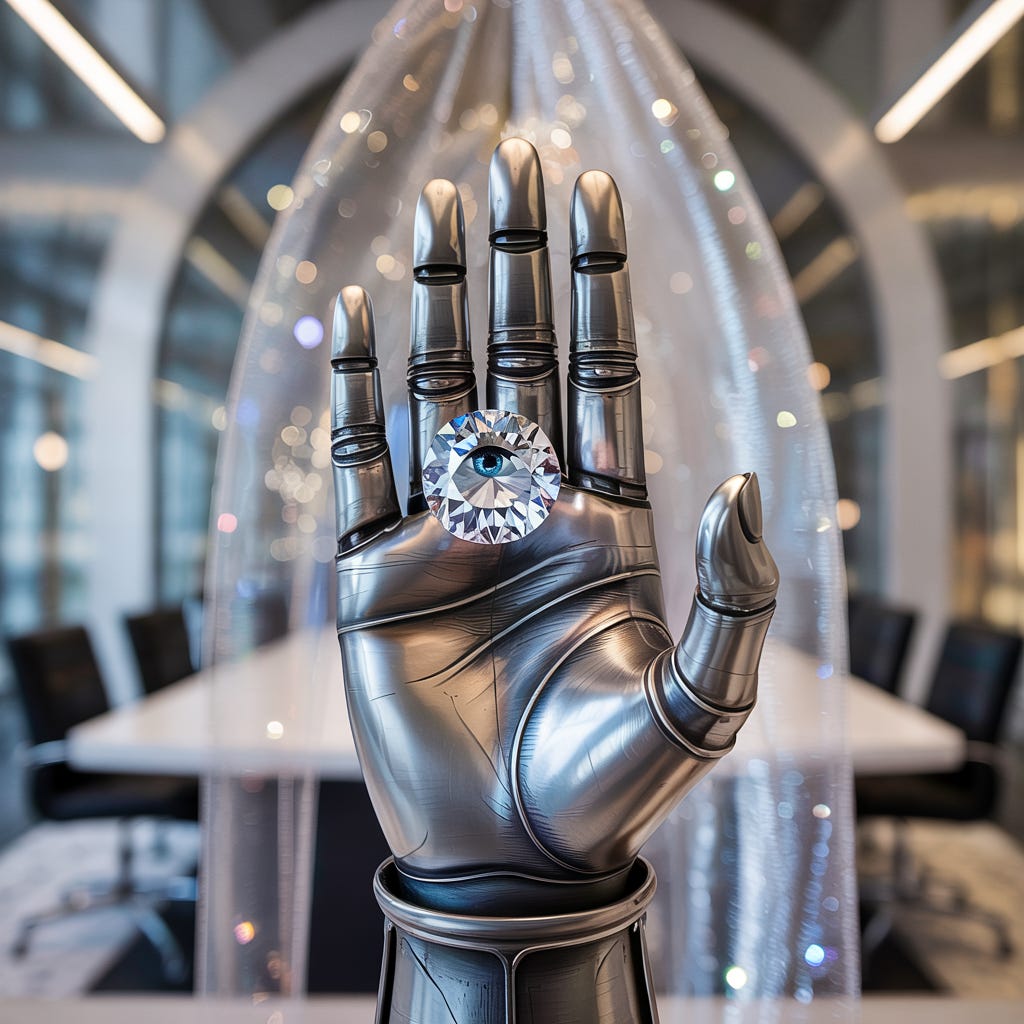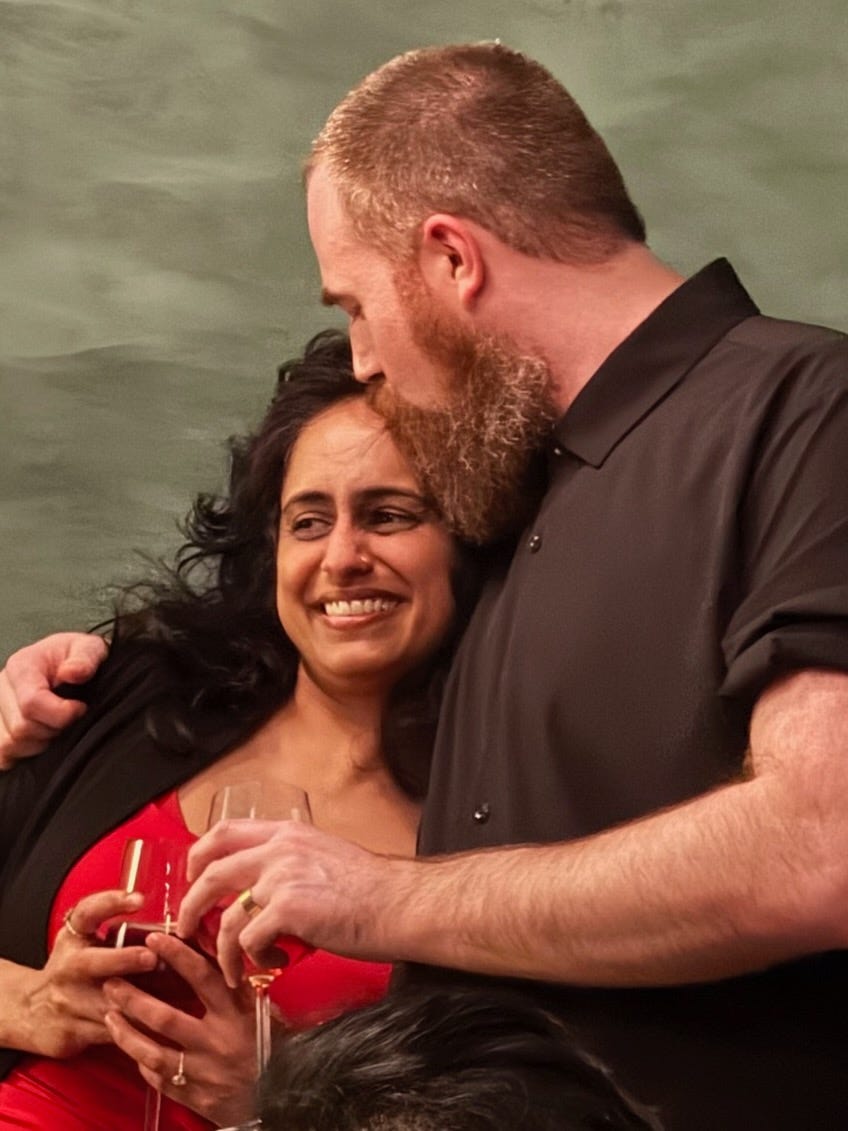Engagement rings are symbols for status games & class signaling
The ring is a site of social competition for both men and women
A happy Easter and 4/20 to you, dear reader.
Announcements:
Join me for the first ever subscriber hangout tomorrow at 7ET/4PT. Come with questions or topics for discussion. I will do this regularly and still working out the format.
I will be following up on reader comments from previous posts in a monthly one. This will eventually be for paid subscribers; you can upgrade here. The idea is to give the most engaged readers more attention because I’m fortunate to have such a thoughtful audience.
i. The symbolic value of rings
The first time, it was a purple sapphire in a white gold setting. The second time, it was a diamond.
Nine years ago, I married a college boyfriend from a wealthy family, one who wore his guilt like a badge of honor but rejected the aesthetic. I should have known that a marriage would struggle to survive a class chasm, but I was naive. Getting a colored gemstone without the baggage emphasized my moral capital. At the time I was at the bottom of the professional totem pole in recruiting as was my ex with a job in IT. I was signaling that while I wanted to climb, I rejected the trappings of wealth and privilege and was more virtuous for it.
Aspirants trade in virtue. Elites trade in symbols. Back then, rejecting the diamond got me moral capital among women peers and signaled membership in the (upper-crust) sisterhood. I performed elite status by rejecting a luxury symbol despite having come from poverty.
The ring today isn’t merely symbolic of my partner’s climbing but also of our shared ascent (I was the progenitor of the discipline in our household enabling it). We both come from blue collar parentage and are the first in our families with degrees. For us, symbolic class markers aren’t optional, but the price of admission to status games we’re required to play right up until the grave.
Now, I’ve climbed several steps in my career and decided to dominate the status game instead. Being above it no longer serves me in pragmatic terms. That’s why I have a diamond this time and I’m not sorry.
ii. The ring’s announcements
Recently I’ve noticed that the ring is a tool for intrasexual competition. It announces the following:
I have a high-value man.
I’m a high value woman as signaled through the ring.
My partner signals to women that he’s “safe” and his place in the hierarchy of influence to other men. Women are the bank of social capital for men, among both other men and women.
The professional class considers us “official”; Dan and I have some overlapping networks so this also matters for our standing together.
The ring is a sort of talisman against hovering men in both professional and social settings.
In professional class spaces and especially in consulting, the ring is instrumental and not merely aesthetic. It reassures women that I’m not hunting for men and broadcasts stability. I become a safer woman to promote and trust with clients.
Of course, all of this happens under the surface. I know my friends are happy for me when they congratulate me.
I also know women compare rings and quietly recalibrate social hierarchy. The ring signals both protection and envy. The pretense of female sameness must not be punctured, though everyone subconsciously knows their position.
iii. Addressing patriarchy and class
The clash of theoretical feminism and professional class reality means women must resolve the contradiction of both coveting and hating the ring as a symbol of patriarchy. The feminist will scorn the engagement ring as patriarchal but also require it to signal having ‘arrived’ to adulthood. Again, we see the clash between stated and revealed preferences, with material status incentives usually winning over ideological commitments. (This also plays out in the bedroom, but that’s another essay).
For the truly wealthy, however, flashy rings are ‘middle class fancy’. They don’t do large diamonds or new rings but signal their inherited wealth through heirlooms, untainted by the consumerist ritual. The heirloom is symbolic exoneration: the elite woman performs the ‘patriarchal tradition’ untainted by the vulgarity of new wealth. I was annoyed with my past self for not having a diamond to trade for the cost of an entirely new household setup; I came out financially worse off to compound my disadvantageous origin. This taught me not to underestimate the symbolic economy again.
Regardless of the woman’s economic background, the ring is nevertheless a symbol of luxury feminism, signaling her virtue via her class coded aesthetics.
This mirrors a long tradition: wealth has always functioned as a proxy for virtue. Even among the progressive set, success is a reflection of merit and merit a reflection of inherent virtue. This same attitude is the source of elitist disdain of Trump supporters; as Rob Henderson argues, class position is morally coded by luxury beliefs.
I take it a step further: luxury beliefs aren’t gender-neutral - they’re born of luxury feminism. From the first wave onward, feminism has been the ideology of elite women. It was never just political, but class branding through virtue.
iv. Coda
Even as I dominate the game I detest, I see it as a theater of symbolic performance.
But when you come from nothing, symbols are tools, armor and weapons for climbing.
To pretend otherwise is its own kind of privileged blindness.
Call me a hypocrite if you like, because the alternative was staying where I began.
Yours,
Anuradha





All politics aside, congratulations!
Congratulations!
This was interesting to read. I only have one cousin who is married, but he is a man and we arent close so I wasnt invited to his wedding. None of my female cousins my age are married. I am not married. I only have one married friend and she got married in Vegas.
So I am fascinated by this post. I have never give much thought to engagement rings before. This is probably because I have never been in a position to contemplate it.
Thank you for writing this!